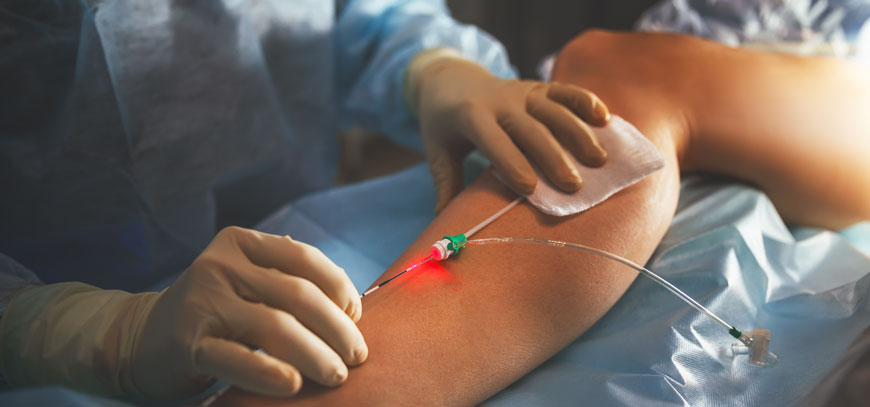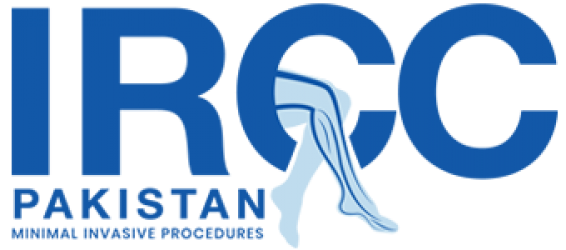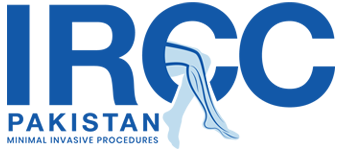Working Time
- Mon-Thu 08:00 – 20:00
Friday 07:00 – 22:00
Saturday 08:00 – 18:00
Contact Info
-
Phone: 92-3324520052
92-3310232883
Ask the Experts
Varicose Vein Ablation

What are Varicose Veins ?
Varicose veins are swollen, twisted, abnormal veins primarily found in the legs.
What Causes Varicose Veins?
Varicose veins are caused by unhealthy or weakened valves inside the veins. Vein valves can become damaged from natural stretching or weakening from the pressure of blood flowing through the veins. If the valves become weak, blood can collect in your legs and pressure builds up, causing the veins to become large, twisted and weak. Varicose veins often appear through the skin on a person’s legs as blue, bulging and twisted veins, in some cases the veins may be raised or stand out on the surface of the skin.
Varicose Vein Risk Factors
Varicose veins don’t discriminate nearly anyone at any age can develop them. There are certain factors that increase your chances of developing varicose veins. These risk factors include:
-
Family history
-
Standing or sitting too long
-
Being overweight
-
Pregnancy
-
Aging
-
Gender
-
Previous leg injury
Signs of Varicose Veins
Swollen, twisted veins aren’t the only indication that you have varicose veins. Other signs and symptoms of varicose veins include:
-
Large, bluish or purple-appearing bulging veins that you can see under the surface of your skin
-
Swelling in your ankles and feet
-
Painful or achy legs that feel “heavy”
-
Muscle cramping in your legs—particularly at night
-
Itchy legs, especially on your lower leg and ankles
-
Burning or throbbing sensations in your legs
-
Discolored patches of skin around the area where you have varicose veins
-
Stasis dermatitis (rash & itchy skin around your varicose veins). If left untreated, varicose veins rash could develop into venous leg ulcers.
Varicose Veins Treatment that We Provide
Varicose Veins can be treated to prevent them from getting worse. Trusting your varicose veins treatment to be board certified, interventional radiologist makes all the difference.
Our Vascular interventional radiologists have a deep understanding of vein problems and are specially trained in treating venous insufficiency leading to complicated varicose veins. The vein specialists at IRCC Pakistan have treated hundreds of patients nationwide who are suffering from painful varicose veins.
If your condition is severe, rest assured, physicians at IRCC Pakistan are leaders in the diagnosis and treatment of vein and offer the following minimally invasive varicose vein treatments in a safe, comfortable outpatient setting.
-
Endovenous Ablation
-
Sclerotherapy for reticular and spider veins
-
Microphlebectomy
1. Endovenous Ablation
Radiofrequency Ablation (RFA), Endovenous Laser Therapy (EVLT) and non-thermal non-tumescent ablation are safe, effective, minimally invasive procedures for the treatment of varicose veins. With both types of ablation, thermal energy is used to close off a blood vessel in the form of either laser or radiofrequency energy. The failing vein closes and is no longer functional. The closed vein is eventually absorbed by the body.
The ablation procedures are performed in an outpatient setting, do not involve any incisions, and recovery time is minimal. Blood flow is diverted to healthy veins, with no negative effects on blood flow or circulation.
- Endovenous Laser Therapy (EVLT) Endovenous Laser Therapy (EVLT) is a minimally invasive procedure performed under local anesthesia in larger varicose veins in the legs. During the procedure, a laser probe is inserted into the vein using ultrasound as guidance. Laser light pulses are emitted causing the vein to shrink and close off, eliminating blood flow. The entire procedure is typically completed in an hour.
- Radiofrequency Ablation (RFA) Radiofrequency Ablation (RFA) is an image guided procedure using radiofrequency energy to close varicose veins in the leg. Radiofrequency energy is delivered in small bursts through a tiny catheter causing the vein to shrink around the catheter as the vein is being treated. After radiofrequency ablation, the vein is smaller and thicker, and there is no blood flowing through it. Over time, the vein is absorbed by the surrounding tissues and permanently disappears. The entire procedure is typically completed in an hour.
- Non-thermal Non-tumescent Ablation Novel non-thermal techniques, such as mechanochemical ablation (MOCA) clarivein and cyanoacrylate adhesive glue (CAE) venaseal and foam therapy varithena have been developed to overcome these unwelcome effects of thermal ablation. So far, the novel techniques have been found to have similar efficacy to thermal methods.
Benefits of Endovenous Ablation Procedures
Radiofrequency Ablation (RFA), Endovenous Laser Therapy (EVLT) and non thermal non tumescent (NTNT) have many benefits over traditional venous surgical stripping techniques
-
Outpatient procedure
-
No surgical incisions
-
No general anesthesia required
-
1-hour procedure time (typically)
-
Minimal recovery time
-
No scarring
-
Immediate relief
Sclerotherapy
Sclerotherapy is a minimally invasive procedure used for the treatment of spider and reticular veins, which are smaller, dilated and similar to varicose veins. Spider and reticular veins may persist after the endovenous ablation and require additional treatment of sclerotherapy
What is Sclerotherapy?
Sclerotherapy is an injection therapy where a tiny needle is used to inject the veins with medication that irritates the lining of the vein.
The vascular specialist will begin by cleaning and sterilizing the treatment area and then use a very fine needle to inject a salt-based solution into the affected veins. This solution irritates the lining of the vein, which makes it swell and close, blocking blood flow. Once the solution has been delivered, the needle is removed and pressure as well as a compression stocking is applied to the treated area. Over a short time, the treated vein closes in response to the irritation and is reabsorbed by the body.
You can have numerous injections to treat different veins during the same procedure. After some time, the treated veins are reabsorbed by the body and eventually will fade and disappear.
Who is a Candidate for Sclerotherapy?
Sclerotherapy can be a highly effective treatment for treating small varicose veins or spider/reticular veins.If you are suffering from smaller varicose veins that are unsightly or causing you to experience uncomfortable symptoms then you may be a candidate for sclerotherapy. Ongoing treatments can be recommended for maintenance. Treatment for varicose veins varies based on the individual, speak with one of our vein specialists about your condition to determine if sclerotherapy is a treatment option for you.
Benefits of Sclerotherapy
There are many benefits of sclerotherapy. The procedure is minimally invasive, so no general anesthesia is required and the procedure typically takes less than an hour to complete. After the procedure you are able to go home and resume your daily activities. The varicose veins gradually fade away, typically between a few weeks to a few months after the procedure.
If you have been diagnosed with varicose veins that are causing you painful or uncomfortable symptoms, you may be a candidate for endovenous ablation therapy. Our interventional radiologist and clinical staff at our outpatient vascular centers combine medical expertise and compassion to guide you through your varicose vein treatment journey every step of the way, providing symptomatic relief and getting you back to your daily routine quickly.

